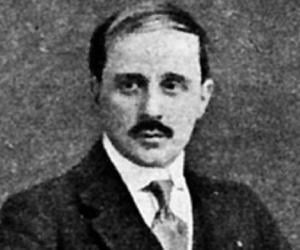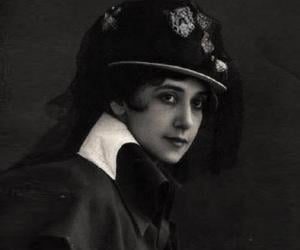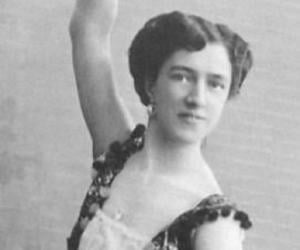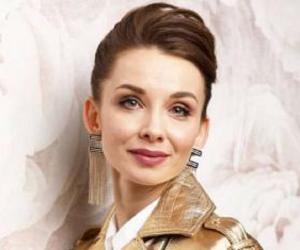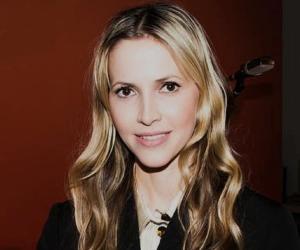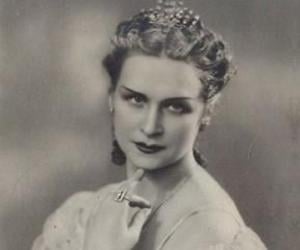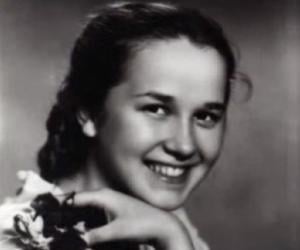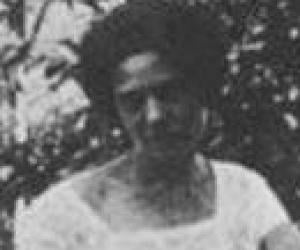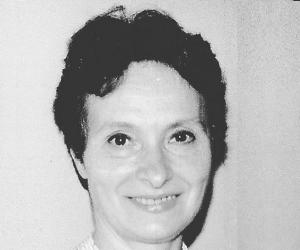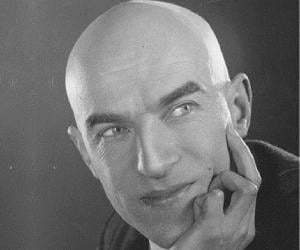Vaganova Academy Of Russian Ballet
Discover the notable alumni of Vaganova Academy Of Russian Ballet. The list includes people like Mikhail Baryshnikov, Rudolf Nureyev, Vaslav Nijinsky, Galina Ulanova & Natalia Makarova. This list of notable alumni is loosely sorted by popularity and has people from different domains of life, such as dancers, film & theater personalities etc.
Vote for Your Favourite Vaganova Academy Of Russian Ballet
Right IconThis ranking is based on an algorithm that combines various factors, including the votes of our users and search trends on the internet.
1
Michel Fokine
(Russian Choreographer and Dancer)
Birthdate: April 23, 1880
Sun Sign: Taurus
Birthplace: Saint Petersburg, Russia
Died: August 22, 1942
Michel Fokine was a Russian dancer and choreographer whose pieces are performed internationally to this day. Fokine is credited with choreographing the works of popular dancers like Anna Pavlova. Renowned for his groundbreaking works, such as Le Pavillon d'Armide, Michel Fokine has been portrayed in a couple of films, namely Nijinsky and A Woman for All Time.
2
Tamara Karsavina
(Russian Prima Ballerina and Founding Member of the Largest Dance-Teaching Organization 'Royal Academy of Dance')
Birthdate: March 10, 1885
Sun Sign: Pisces
Birthplace: Saint Petersburg, Russia
Died: May 26, 1978
Tamara Karsavina was a Russian ballet dancer who served as a principal artist at Sergei Diaghilev's popular company The Ballets Russes. Karsavina also taught ballet and is credited with co-founding modern British ballet. After settling in Britain, Tamara Karsavina popularized the dance form in Britain and helped establish The Royal Academy of Dance as well as The Royal Ballet.
3
Agrippina Vaganova
(Russian Ballet Teacher Known for Developing the 'Vaganova Method' )
Birthdate: June 26, 1879
Sun Sign: Cancer
Birthplace: Saint Petersburg, Russia
Died: November 5, 1951
The person behind the development of the Vaganova method, Agrippina Vaganova was a significant name in the Russian ballet scene. She also penned Fundamentals of the Classical Dance, which is the most-followed text on ballet. At Mariinsky Ballet, she was known as the queen of variations.
4
Evgenia Obraztsova
(Ballet dancer)
Birthdate: January 18, 1984
Sun Sign: Capricorn
Birthplace: Leningrad, Soviet Union
Russian ballerina Evgenia Obraztsova is best known for her performances as Princess Aurora in The Sleeping Beauty, as Juliet in Romeo and Juliet, and as Odette/Odile in Swan Lake. Born into a family of ballet dancers, she joined the Vaganova Academy and then performed as part of the Mariinsky Ballet.
5
Alina Somova
(Ballet dancer)
Birthdate: October 22, 1985
Sun Sign: Libra
Birthplace: Saint Petersburg, Russia
Russian ballerina Alina Somova was initially pushed into sports by her mother but later moved to ballet. Now the principal dancer at the Mariinsky Ballet, she has also won many awards, such as a Golden Mask for her performance as the Tsar-Maiden in the ballet The Little Humpbacked Horse.
6
Marina Semyonova
(Russian Ballerina)
Birthdate: June 12, 1908
Sun Sign: Gemini
Birthplace: Saint Petersburg, Russia
Died: June 9, 2010
The first Soviet-trained prima ballerina, Marina Semyonova demonstrated an unusual style of ballet that influenced a generation of dancers. She won the Stalin Prize in 1941 when she was associated with the Bolshoi Theatre. She stayed with the company after retiring and became one of the most prominent teachers. In 1975, Semyonova was named a People's Artist of the USSR.
7
Ninel Kurgapkina
(Russian Former Prima Ballerina)
Birthdate: February 13, 1929
Sun Sign: Aquarius
Birthplace: Saint Petersburg, Russia
Died: May 8, 2009
Ninel Kurgapkina was a Russian ballet dancer and teacher. She is best remembered for her association with the popular classical ballet company the Imperial Russian Ballet where she served as a prima ballerina. From 1969 onwards, she taught at the Imperial Russian Ballet and conducted master classes at several institutions. In 1974, she received the People's Artist of the USSR.
8
Leonid Lavrovsky
(Russian Ballet Choreographer Famous for Choreographing the First Full Version of Sergei Prokofiev’s 'Romeo and Juliet')
Birthdate: June 18, 1905
Sun Sign: Gemini
Birthplace: Saint Petersburg, Russia
Died: November 26, 1967
Leonid Lavrovsky was a Russian ballet choreographer best remembered for choreographing Sergei Prokofiev's Romeo and Juliet. In 1944, he was chosen as the Bolshoi Theater's head ballet master, thanks to the success and popularity of Romeo and Juliet. At the Bolshoi, Leonid Lavrovsky restaged Romeo and Juliet in 1946 for which he received the prestigious Stalin Prize.
Birthdate: September 22, 1939
Sun Sign: Virgo
Birthplace: Moscow, Russia
Died: November 23, 2014
Alla Sizova was a Russian ballerina best remembered for her association with the Imperial Russian Ballet. Along with Alla Osipenko, Natalia Makarova, and Irina Kolpakova, Sizova was one of the four superstar ballet dancers of the Soviet Union. In 1983, Alla Sizova was honored with the prestigious People's Artist of the USSR, the Soviet Union's highest artistic honor.
10
Rostislav Zakharov
(Russian Choreographer, Ballet Dancer and Opera Director)
Birthdate: September 7, 1907
Sun Sign: Virgo
Birthplace: Astrakhan, Russia
Died: January 15, 1984
Rostislav Zakharov was a Russian ballet dancer, choreographer, and opera director. He is best remembered for choreographing Cinderella (1945) and The Fountain of Bakhchisaray (1934). He also worked as a professor and taught at the Russian Academy of the Arts in Moscow. In 1969, Rostislav Zakharov was honored with the People's Artist of the USSR.
